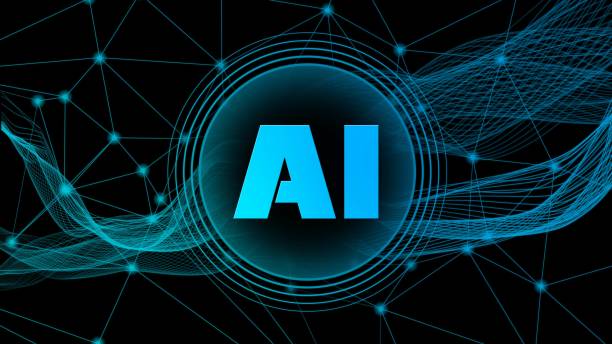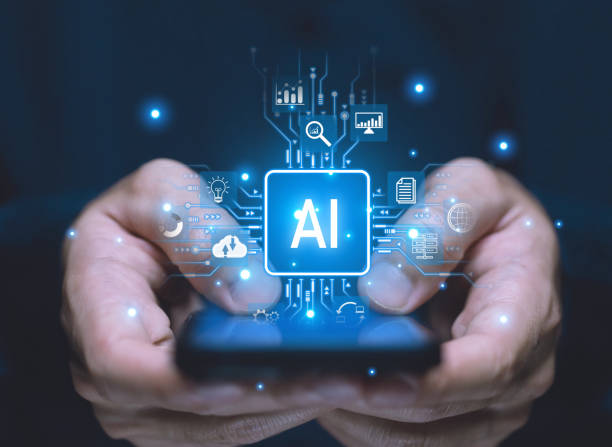### What is On-Page SEO and Why Does It Matter?

On-page SEO (#OnPageSEO) refers to a set of actions you take within your website to improve your site’s ranking in search engine results like Google.
These actions include optimizing content, site structure, HTML tags, and other technical factors.
The importance of on-page SEO lies in the fact that it helps search engines better understand your website’s content and show it to relevant users.
By doing on-page SEO correctly, you can attract more organic traffic, increase conversion rates, and ultimately achieve your business goals.
In fact, on-page SEO is one of the main foundations of any successful SEO strategy, and without it, your off-page SEO (#OffPageSEO) efforts will not achieve the desired results.
Generally, #SEO has two basic parts: on-page SEO and off-page SEO.
On-page SEO focuses on optimizing elements within the website, while off-page SEO focuses on activities like link building (#LinkBuilding) and presence on social networks. More information about SEO will help you.
On-page SEO is important because you have complete control over it.
You can optimize content, improve site structure, and properly set HTML tags.
This is while off-page SEO largely depends on external factors such as the quality and number of incoming links, over which you have less control.
Optimizing images and using appropriate alt tags for them helps search engines identify your images and display them in image search results.
This can drive more traffic to your site.
In addition, choosing the right names for image files is also effective in SEO.
Using appropriate keywords in titles, meta descriptions, and website content helps search engines better understand the subject of your pages and show them to relevant users.
Using keyword research tools can help you find the right keywords.
Are you bothered by losing customers who visited your site to make a purchase?
Rasoweb is your specialized solution for having a successful online store.
✅ Significant increase in your online sales
✅ Creating trust and professional branding among customers⚡ Get free consultation from Rasoweb experts!
Keyword Research: A Powerful Tool in On-Page SEO

Keyword research is one of the most important steps in on-page SEO.
By researching keywords, you can find the words that users use to search for your products or services and use them in your site content.
Using keywords correctly in on-page SEO helps search engines understand what your site is about and show it to relevant users.
There are various tools for keyword research, such as Google Keyword Planner, Ahrefs, and SEMrush.
These tools help you find keywords related to your business, check their search volume, and assess the level of competition for each keyword.
Using this information, you can choose the right keywords and use them in your site’s on-page SEO.
When choosing keywords, look for keywords with high search volume and low competition.
These keywords help you attract more traffic and improve your site’s ranking in search results.
Also, look for long-tail keywords.
These keywords usually have less search volume, but the competition is also lower, and they can attract very targeted traffic to your site.
In fact, these keywords are extracted according to the user’s intent.
Keyword research is an ongoing process.
You should regularly find new keywords and check the performance of your current keywords.
If your keywords are no longer generating traffic, you should replace them with new keywords.
Content Optimization: The Golden Key to On-Page SEO

Content is king! This phrase is very common in the world of SEO, and for good reason.
High-quality and relevant content is one of the most important ranking factors in search engines.
Optimizing content for on-page SEO includes creating engaging and readable content, using appropriate keywords, and structuring content appropriately.
When creating content, look for ways to solve your users’ problems.
Create content that provides useful information, answers users’ questions, and helps them with their tasks.
Content that provides value not only satisfies users but also impresses search engines.
Use appropriate keywords in titles, subtitles, and the main body of the content.
But be careful not to overuse keywords.
Overusing keywords can harm your site’s SEO and cause search engines to penalize your site.
Structure your content logically.
Use titles and subtitles to divide the content and use short, readable paragraphs.
This helps users read and understand your content more easily. Click here to have high-quality content
By making appropriate optimizations in your website content, you can improve your site’s ranking in search results and attract more traffic.
This can lead to increased brand awareness and improved sales.
| Keyword Type | Description |
|---|---|
| Short | Consisting of one or two words (e.g., “sports shoes”) |
| Long | Consisting of three or more words (e.g., “best running sports shoes”) |
| Informational | The user is looking for information (e.g., “how to do SEO?”) |
| Transactional | The user intends to purchase (e.g., “buy laptop”) |
| Tool | Features |
|---|---|
| Google Keyword Planner | Free, provides search volume and competition |
| Ahrefs | Commercial, advanced features for competitor analysis |
| SEMrush | Commercial, diverse tools for SEO |
| Moz Keyword Explorer | Commercial, provides keyword difficulty score |
Optimizing Title and Meta Descriptions
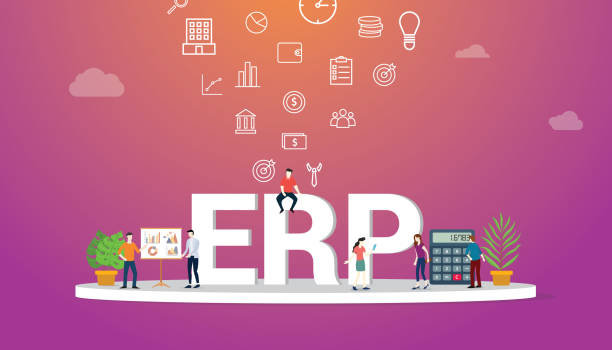
The title and meta descriptions are the first things users see in search results.
Optimizing the title and meta descriptions for on-page SEO helps search engines understand what your page is about and show it to relevant users.
An attractive and relevant title can encourage users to click on your site link and enter your page.
The title should be short, attractive, and contain the main keyword of the page.
The title length should not exceed 60 characters, otherwise, it will be cut off in search results.
Meta descriptions should be a summary of the content of the page and encourage users to click on your site link.
Meta description length should not exceed 160 characters.
The title tag is an HTML element that specifies the title of the web page.
This title is displayed at the top of the browser and in search results.
The meta description tag is an HTML element that provides a short description of the content of the page.
This description is displayed in search results below the page title.
A good title should include the main keyword of the page, be attractive, and be concise.
A good meta description should include the main keyword of the page, a summary of the content of the page, and be encouraging to click. More information about meta tags
Are you worried that your company’s old website is driving away new customers? Rasoweb solves this problem by designing a modern and efficient corporate website.
✅ Increases your brand credibility.
✅ Helps attract targeted customers.
⚡ Contact Rasoweb for free consultation!
Optimizing URL Link Structure in On-Page SEO

The page URL is one of the important factors in on-page SEO.
A good URL should be short, readable, and contain the main keyword of the page.
Long and complex URLs are not attractive to search engines and users and can harm your site’s SEO.
The website’s link structure should be logical and user-friendly.
This means that users should be able to easily navigate your site and find the pages they are looking for.
Avoid creating duplicate URLs.
If you have two pages with similar content, you should use the Canonical tag to specify the main page.
Use 301 redirects to move users and search engines from an old URL to a new URL.
This helps maintain your site’s SEO ranking.
A logical link structure helps search engines better understand your site structure and find important pages more easily.
This can help improve your site’s ranking in search results.
By optimizing URLs and website link structure, you can improve user experience and improve your site’s ranking in search results.Site structure and its impact on SEO
The Importance of Site Loading Speed in On-Page SEO

Site loading speed is one of the important factors in user experience and on-page SEO.
Users who are waiting for a web page to load usually lose patience and leave the site.
This can lead to an increase in Bounce Rate and a decrease in your site’s ranking in search results.
To improve site loading speed, you can use various methods.
For example, you can optimize your images, use a Content Delivery Network (CDN), and use a Cache Plugin.
A faster site provides a better user experience and can help improve your site’s ranking in search results.
CDN is a network of servers that are spread around the world.
By using CDN, your site’s content is served to the user from the nearest server.
Using a cache plugin can help reduce your site’s loading time.
The cache plugin saves a copy of your site’s pages and displays that copy to the user when requested.Cache Plugins for WordPress
Optimizing Images and Videos in On-Page SEO
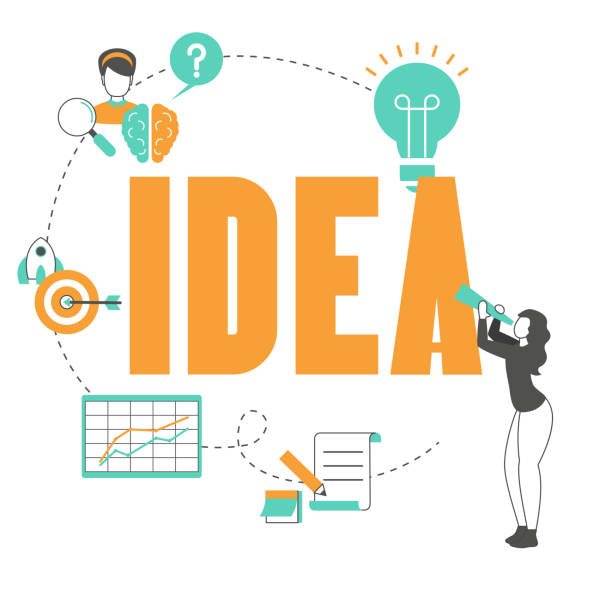
Images and videos are an important part of website content.
Optimizing images and videos for on-page SEO helps search engines better understand them and display them in search results.
Using high-quality and relevant images and videos can add to the attractiveness of your site’s content and keep users on your site for longer.
To optimize images, use an appropriate file name, use the Alt tag, and optimize the image size.
To optimize videos, use an appropriate title and description, use appropriate tags, and upload the video to video sharing sites such as YouTube.YouTube for SEO
The Alt tag is an alternative text for the image that is displayed if the image does not load.
The Alt tag should be a detailed description of the image and contain the main keyword of the page.
By using optimized images and videos, you can attract more traffic to your site.
| Tip | Description |
|---|---|
| Choose the right format | Use JPEG format for photos and PNG for graphic images |
| Compress images | Reduce image size without significant loss of quality |
| Use Alt tag | Brief and relevant description of the image content |
| Name the file appropriately | Use relevant keywords in the file name |
| Tip | Description |
|---|---|
| Appropriate title and description | Use relevant and attractive keywords |
| Choose relevant tags | Use appropriate tags to categorize the video |
| Optimize file size | Reduce video size without significant loss of quality |
| Use subtitles | Increase accessibility and better understanding of the video |
Optimizing Responsive Design in Website Design
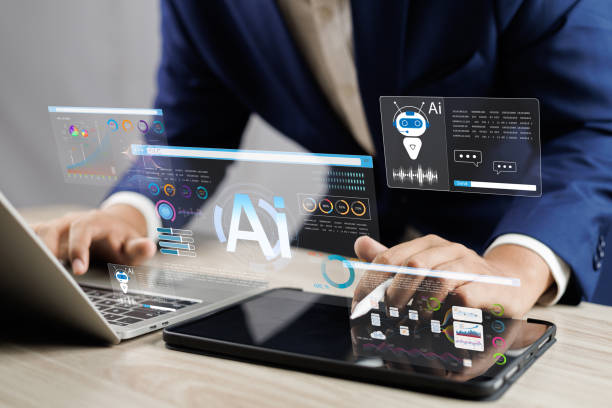
Responsive design means designing a website that automatically adapts to the screen size of different devices such as mobile phones, tablets, and desktop computers.
Today, given the increasing use of mobile phones to access the Internet, responsive design is very important for on-page SEO.
Google and other search engines prefer websites that are responsive in search results.
If your website is not responsive, your site’s ranking in search results may decrease.
A responsive website provides a better user experience and can help increase conversion rates and decrease bounce rates.Introducing website design
By optimizing your website’s responsive design, you can improve user experience and improve your site’s ranking in search results.
Responsive design helps ensure that your website is accessible to all users.
Are you bothered by losing customers who visited your site to make a purchase?
Rasoweb is your specialized solution for having a successful online store.
✅ Significant increase in your online sales
✅ Creating trust and professional branding among customers⚡ Get free consultation from Rasoweb experts!
Using Internal Links in On-Page SEO
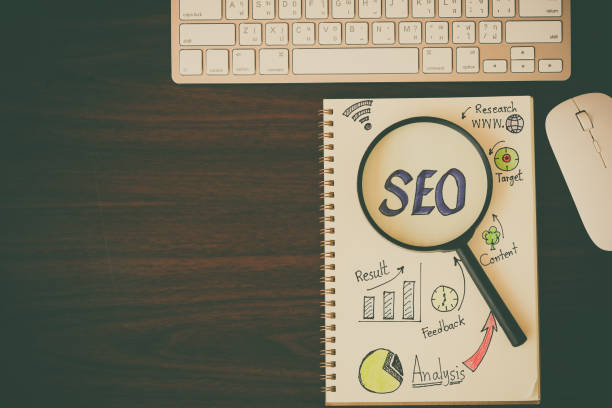
Internal Links are links that connect different pages of a website to each other.
Using internal links in on-page SEO helps search engines better understand your site structure and find important pages more easily.
Internal links can also help improve user experience and keep users on your site longer.
When creating internal links, use appropriate link text, link to related pages, and limit the number of internal links on each page.
Link text (Anchor Text) is the text you click on to go to another page.
The link text should be a detailed description of the destination page and contain the main keyword of the page.
Internal links help search engines understand the relationship between different pages of the website.
This can help improve your site’s ranking in search results.
By using internal links, you can guide users to important pages on your site and increase conversion rates.Link building and its impact on SEO
Monitoring and Analyzing On-Page SEO
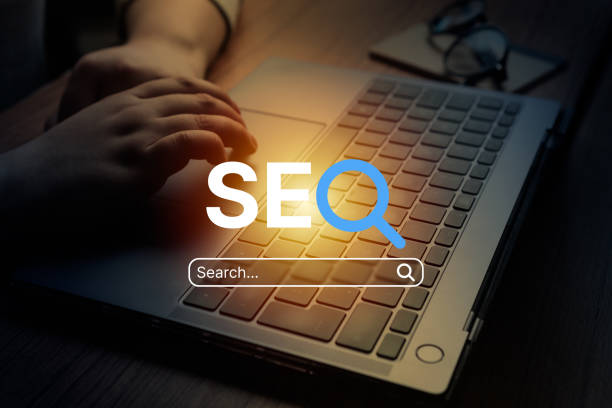
Monitoring and analyzing the performance of on-page SEO is essential to ensure that your efforts in this area are paying off.
Using various tools such as Google Analytics and Google Search Console, you can check your site traffic, identify the keywords that attract the most traffic, and find technical problems with your site.
Google Analytics helps you get accurate information about your site traffic.
Google Search Console helps you check your site’s performance in search results.
Using this information, you can improve your on-page SEO strategy and improve your site’s ranking in search results.
By regularly monitoring and analyzing the performance of your site’s SEO, you can identify opportunities for improvement and optimize your strategy.
This process helps you stay up-to-date with the latest changes in search engine algorithms and adapt your site to them.More information on SEO analysis
Frequently Asked Questions
| Question | Answer |
|---|---|
| What is On-page SEO? | On-page SEO refers to a set of actions that are performed within your website to improve its ranking in search engine results. This includes content optimization, site structure, and HTML code. |
| Why is On-page SEO important? | On-page SEO helps search engines understand your page’s content and determine whether your content is relevant to searchers. It is the foundation of any successful SEO strategy. |
| What are the key elements of On-page SEO? | Page Title (Title Tag), Meta Description, keyword usage, image optimization, heading structure (H1, H2, …), internal linking, and content quality are key elements. |
| How do we optimize the page title (Title Tag)? | The page title should include the main keyword, be attractive and encouraging to click, and its length should be between 50 and 60 characters (or appropriate pixels) to be fully displayed in the search results. |
| What role does the Meta Description play in On-page SEO? | The meta description is a summary of the page’s content that is displayed below the title in search results. Although it does not directly affect ranking, it helps SEO by increasing the click-through rate (CTR). |
| What is the importance of using heading structure (H1, H2, H3) in On-page SEO? | Headings structure the content of the page and make it easier to read. H1 is usually the main title of the page and should include the keyword. H2 and H3 are used to organize subsections and help search engines understand the content hierarchy. |
| How to use keywords effectively in the content? | Keywords should be used naturally and logically throughout the content, including the introduction, body, and conclusion. Avoid excessive keyword stuffing. |
| What are the steps to optimize images for On-page SEO? | Includes compressing images to reduce size, using descriptive filenames, adding appropriate alternative text (Alt Text), and optimizing the image title and description. Alt Text is critical for accessibility and helping search engines understand the content of the image. |
| What is internal linking and what are its benefits? | Internal linking means creating links from one page on your website to another page on the same website. This helps users easily navigate your site, distributes page authority across the site, and helps search engines better understand your site structure. |
| What is the importance of content quality in On-page SEO? | Quality content that is accurate, comprehensive, and valuable to users is the cornerstone of on-page SEO. Search engines prefer content that meets the needs of users. Quality content leads to more time spent on the site (Dwell Time) and reduced bounce rate, which are positive SEO signals. |
And other services of Rasa Web advertising agency in the field of advertising
Smart advertising campaign: a creative platform to improve campaign management using real data.
Smart Marketplace: an effective tool to increase sales by using real data.
Smart Conversion Rate Optimization: Designed for businesses that want to attract customers through smart data analysis.
Smart UI/UX: A creative platform to improve campaign management by targeting the right audience.
Smart linking: A dedicated service for growing digital branding based on optimizing key pages.
And more than a hundred other services in the field of internet advertising, advertising consulting and organizational solutions
Internet Advertising | Advertising Strategy | Advertorial
Resources
Comprehensive Technical SEO Guide – SEO Clarity
,Comprehensive Internal Linking Guide – Ahrefs
,Internal Optimization – Moz
,On-Page SEO: The Complete Guide – Search Engine Journal
Are you ready to advance your business in the digital world? The Rasaweb Afarin expert team helps you achieve your big goals and have a strong presence on the web by providing comprehensive digital marketing services, including SEO-optimized website design. Contact us today for consultation and to start the digital transformation of your business.
📍 Tehran, Mirdamad Street, next to the Central Bank, South Kazerun Alley, Ramin Alley, No. 6


